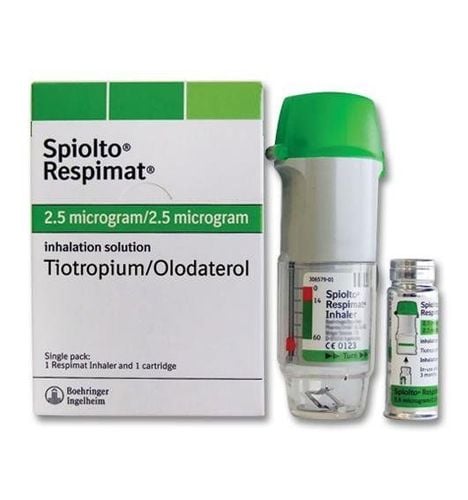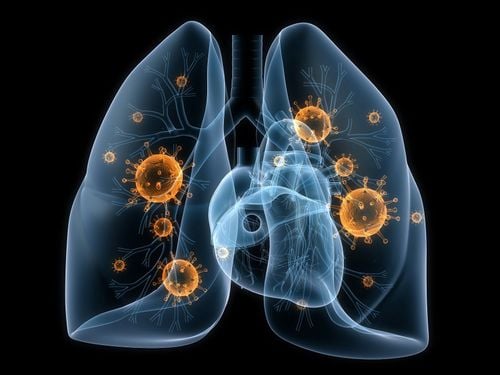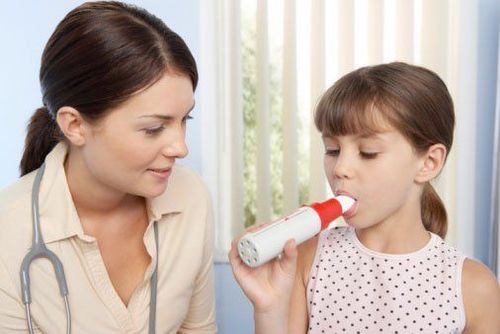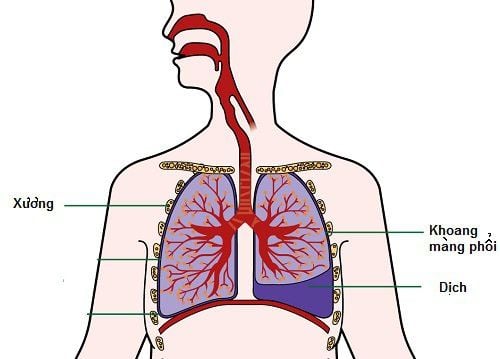This is an automatically translated article.
The article is professionally consulted by Master, Doctor Nguyen Huy Nhat - Department of Medical Examination & Internal Medicine - Vinmec Danang International General Hospital. Doctor Nguyen Huy Nhat has many years of experience in the field of respiratory disease treatment.Shortness of breath is a characteristic symptom of patients with chronic obstructive pulmonary disease. Controlled breathing is a widely used method of reducing shortness of breath, providing patients with more oxygen, and contributing to slowing disease progression.
The following article will guide you to perform two methods of controlled breathing: pursed-lip breathing and diaphragmatic breathing.
1. What is chronic obstructive pulmonary disease?
Chronic obstructive pulmonary disease (COPD) is a common respiratory disease characterized by persistent respiratory symptoms such as cough, persistent sputum production, and shortness of breath that worsen over time. There are many risk factors for chronic obstructive pulmonary disease such as:Genetic factors: patients with alpha 1-antitrypsine deficiency, lung defects during fetal development or hyperresponsiveness airways will have a higher risk of disease than the general population. Environmental factors: cigarette smoke is the leading cause of COPD, airway obstruction is closely related to the duration and extent of smoking, most COPD patients have a history of smoking. In addition, long-term exposure to dust and occupational chemicals can cause the development of COPD. Repeated respiratory infections in childhood will increase the risk of COPD in old age.
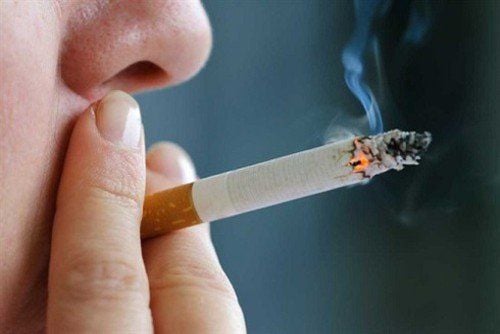
2. Guidelines for Breathing in Chronic Obstructive Pulmonary Disease
Shortness of breath is a characteristic symptom of chronic obstructive pulmonary disease, breathing properly helps to provide enough oxygen, maintain health, improve the disease condition and prevent the development of the disease.Deep breathing is an essential skill for patients with chronic obstructive pulmonary disease, deep breathing helps to provide oxygen, remove CO2 and stimulate internal organs to work well. To breathe deeply, people with chronic obstructive pulmonary disease need to use a combination of two techniques: diaphragmatic breathing and pursed-lip breathing.
2.1 Diaphragm Breathing Instructions The diaphragm is the body's main breathing muscle located below the lungs, separating the ribcage and abdominal cavity. When breathing out, the diaphragm will move up, when inhaling, the diaphragm will move down to expand the lungs, pulling air into the lungs. Due to the accumulation of air in the lungs, the rib cage of COPD patients is inflated, restricting the diaphragm's activity. At the same time, when breathing is difficult, the patient tends to forget to use the diaphragm and use the muscles in the shoulders and upper chest, so the patient's breathing is often shorter and faster. Practicing diaphragmatic breathing will help patients increase the efficiency of their breathing and save energy.
The technique of diaphragmatic breathing is as follows:
The patient sits in a comfortable position, neck and shoulders relaxed. Place one hand on the abdomen below the tip of the sternum (epigastric region), the other hand on the chest. Inhale slowly through the nose so that the hand on the abdomen feels the abdomen rising, the chest does not move. When exhaling, pull in the abdomen, breathe slowly through the mouth, the time to exhale is try to be twice as long as the time to inhale, the hand on the abdomen feels like the abdomen is concave. You should practice diaphragmatic breathing several times a day, when you have mastered breathing techniques when lying down and sitting, you should practice breathing while standing or working.

Puffy-lip breathing (also known as pursed-lip breathing) is an effective and easy method to help the airways clear. It collapses on exhalation, allowing air to escape more easily, reducing air retention and shortness of breath.
The technique of pursed lips breathing is as follows:
The patient sits in a comfortable position, relaxes the neck and shoulders, inhales slowly through the nose, mouth closed. Exhale through your mouth, lips pout like a whistle, puckering lips will help the air flow out more slowly. Try to exhale slowly, exhaling twice as long as inhaling, breathing slowly will help expel the residual gases in the lungs and help create more space for oxygen to enter the lungs. When you first start practicing pursed-lip breathing, you can silently count "one, two" when inhaling and "one, two, three, four" when exhaling, note that between inhalation and exhalation, there should be no interval. stop breathing. You should practice pursed-lip breathing to become a habit. When breathing is difficult, perform pursed-lip breathing several times until the shortness of breath improves. To use a combination of diaphragmatic breathing and pursed lip breathing effectively, the patient must have determination and perseverance in practice. Should choose a quiet place to practice, the right time to practice is when you are relaxing. Try to sit up straight to help increase lung volume and air intake. When starting out, it may be enough to just practice a few times a day, then apply it whenever you feel short of breath or when doing things that will make breathing difficult like exercising, bathing, taking the stairs, etc. ...
Please dial HOTLINE for more information or register for an appointment HERE. Download MyVinmec app to make appointments faster and to manage your bookings easily.





